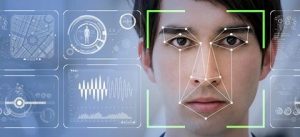
Biometric technology is fast becoming popular in a range of industries. Of all these products, facial recognition is one of the most well-known and in demand. Indeed, argues Johnson Controls, the concept has a great deal of potential for the access control sector and in security more broadly.
Facial recognition, however, has gained a bad reputation for inefficiency during its early years of development, not to mention several publicly known poor-use or mis-use cases which have not helped the argument for increased applications for the technology. Here, Johnson Controls explains how the technology works and presents some of the potential benefits it could bring to everyday life.
Simply put, facial recognition is a method of determining the similarity between images of the face, utilising software to evaluate this. Technology such as a biometric reader will capture an image of an individual’s face, and will then proceed to:
• Read the geometry of the face, assessing aspects including facial landmarks and the distance between features (detection)
• Once it has determined a ‘facial signature’, it compares this formula to a database of known faces (analysis), in a 1 to many system, or, to a single face, on a card for example, in 1 to 1 system.
• If the system can match the signature to an image in its source, a decision can be made, and access can be granted or denied (recognition)
Whilst its accuracy is improving and usage is growing, there are still questions regarding facial recognition. Critics often argue that inaccurate identification can occur, which makes a biometric access control system less effective than other security methods.
But the reality is that these systems are now more precise than ever. The National Institute of Standards and Technology claims false identifications have dropped from a rate of 4.1% to just 0.08% between 2014 and 2020. Error rates can change when facial recognition devices leave testing and enter the market, but this still represents promise for the industry.
As the technology becomes more advanced, debates over privacy and regulation for facial recognition will certainly continue. But as this occurs, so will the diversification of biometric technology. Johnson Controls aims to advance access control capabilities by developing its video surveillance solutions. So, whether its video analytics or thermal detection systems, Johnson Controls affirms that the concepts used by facial recognition will find long-term use in the security sector.











